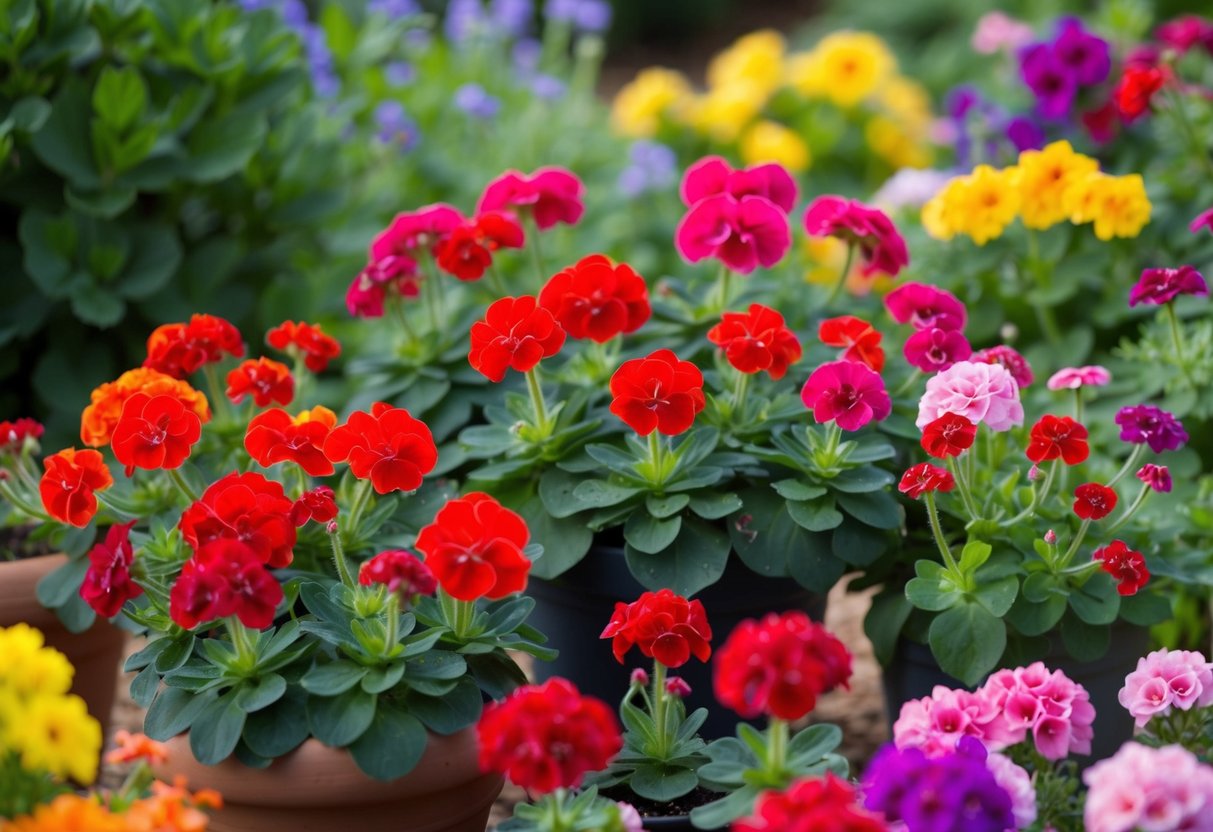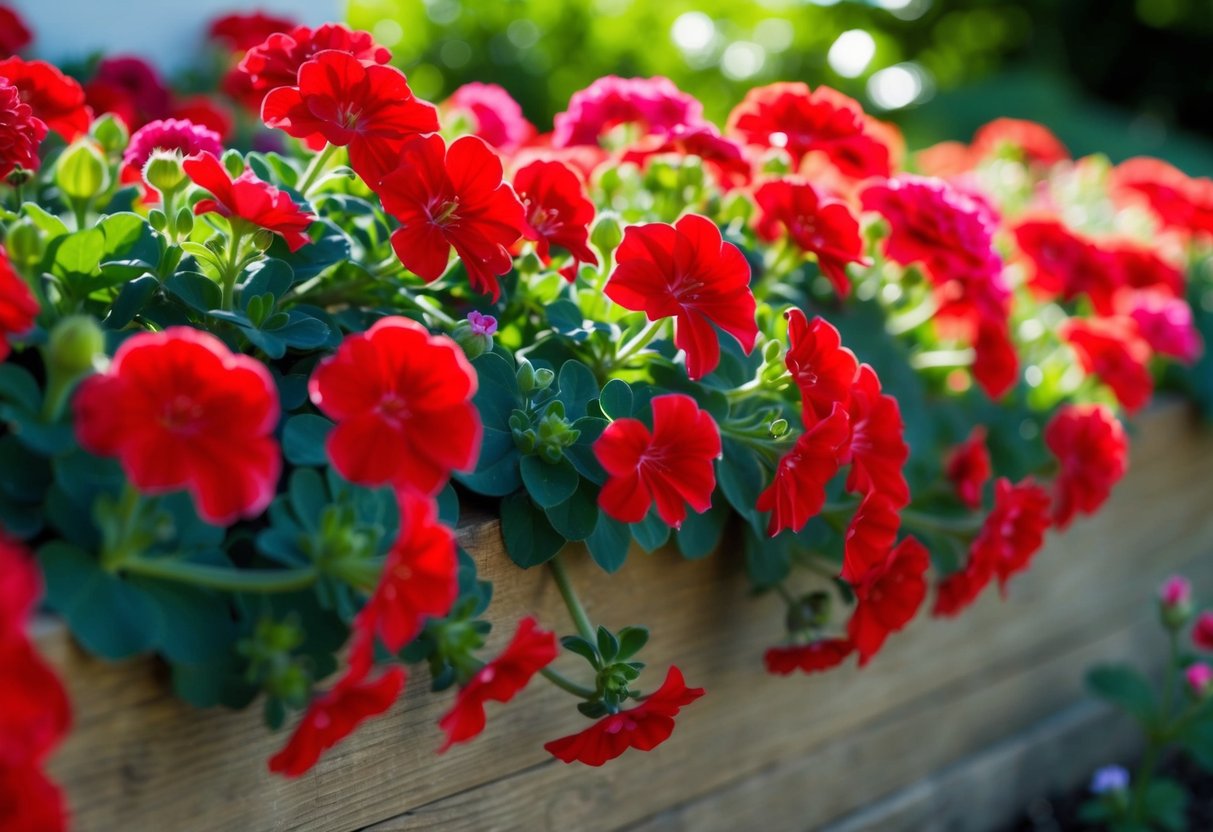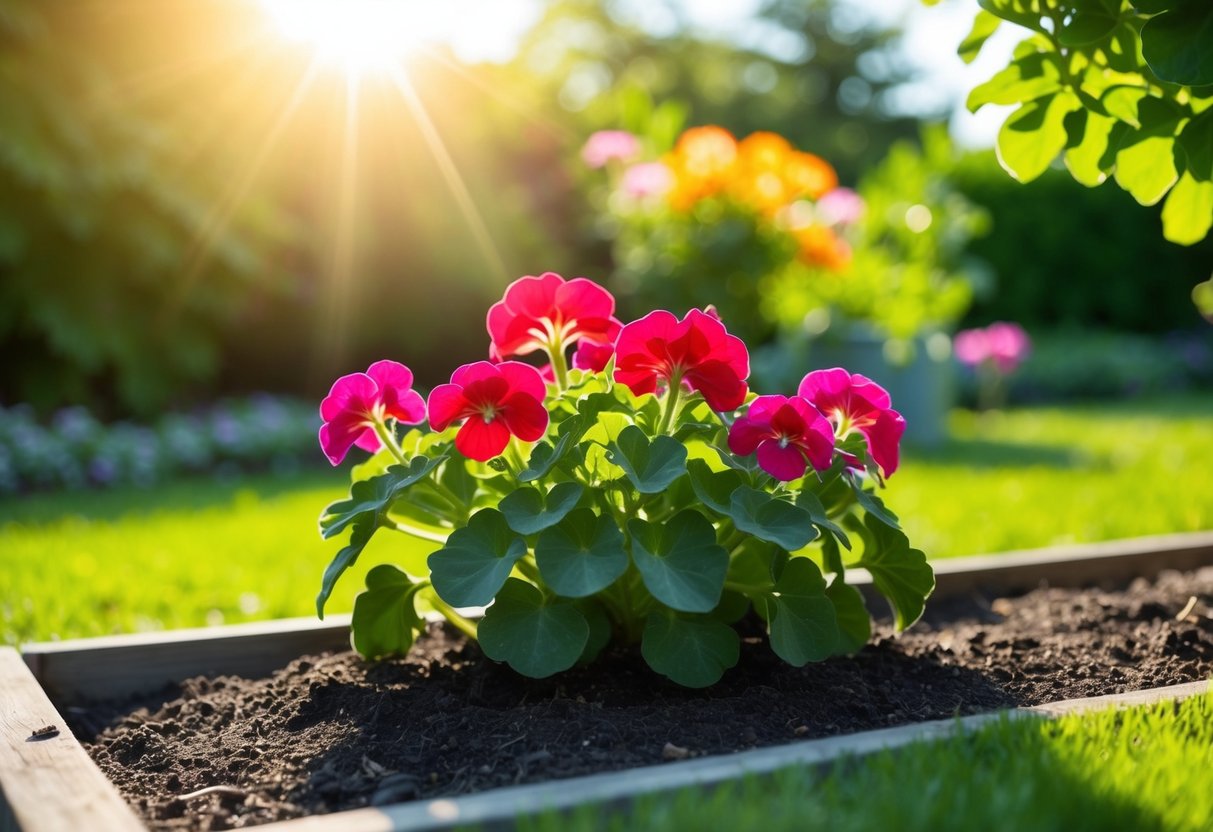Do Geraniums Need Full Sun? Essential Tips for Thriving Blooms
When you’re growing geraniums, one of the first questions that might come to mind is whether they need full sun. You need to know how much light these colorful flowers require.
Most geraniums thrive with between 4-6 hours of full sun each day, helping them to produce vibrant blooms. Too much direct sunlight, though, can be a bit much, especially on extremely sunny days.

If you’re wondering about indoor geraniums or have the ivy variety, there’s a slight twist. Ivy geraniums prefer light shade instead. This means you might need to adjust their position if you’re growing them indoors or in a shaded area of your garden.
By understanding the light needs of your geraniums, you’re well on your way to helping them flourish. With the right balance, you’ll enjoy lush, beautiful blooms all season long. Whether indoors or out, ensuring your geraniums get the proper light makes all the difference in their growth and appearance.
Understanding Geranium Varieties

When it comes to geraniums, different types have unique sunlight requirements and characteristics. Zonal geraniums thrive in full sun, while ivy and scented varieties are more adaptable. Martha Washington geraniums have specific light preferences.
Zonal Geraniums and Their Sunlight Needs
Zonal geraniums, known scientifically as Pelargonium x hortorum, prefer full sun. These popular garden plants produce vibrant blooms in sunny spots. They are hardy in a range of conditions and can be a versatile option for gardeners.
These geraniums are best suited for hardiness zones 9-12. Proper sunlight ensures their blooms are bright and plentiful. If you live outside these zones, treat zonal geraniums as annuals.
A tip for gardeners is to rotate your potted geraniums to ensure even sunlight exposure.
Ivy and Scented Geraniums Adaptability
Ivy geraniums are different from zonal types, thriving in light shade. This makes them ideal for hanging baskets on patios or balconies with dappled light. Their cascading growth habit is lovely and unique.
Scented geraniums, with their fragrant leaves, can tolerate a mix of sun and shade. They are often favored in gardens for both their aroma and adaptability in various light conditions. These two varieties do well in different settings but don’t require as much direct sun as zonal geraniums.
Martha Washington Geraniums Light Preferences
Martha Washington geraniums, also called regal geraniums, have specific light needs. They prefer cooler climates and benefit from morning sun with afternoon shade. Unlike the more sun-resilient zonal types, these geraniums do not thrive in intense heat.
They are suitable for hardiness zones 10-11. If you want their striking blooms, ensure they get moderate sunlight but avoid harsh midday sun.
You might find these geraniums as houseplants as well since they can adapt to indoor environments with indirect light. Proper care keeps them blooming beautifully across seasons.
Essentials of Geranium Care

Caring for geraniums involves making sure they get the right amount of sunlight, ensuring efficient watering, and using fertilizer to help them grow well. Each of these factors plays an important role in making your flowering plants healthy and vibrant.
Proper Sun Exposure for Thriving Plants
Geraniums generally need a good amount of sunlight to thrive. Most varieties require about four to six hours of full sun each day. This means placing them in a spot where they can get direct sun, like a bright windowsill or an outdoor garden that gets plenty of morning light.
For indoor plants, avoid placing them in full shade, as this can slow down their growth. Ivy geraniums are an exception, as they prefer light shade. Giving geraniums the right sun exposure encourages vigorous flowering and healthy foliage.
Watering Geraniums Efficiently
Watering your geraniums requires a careful balance. Too much or too little can affect plant health.
You should water them when the top inch of soil feels dry to the touch. This helps prevent overwatering, which can cause root rot.
Using well-draining soil is crucial. Pots with drainage holes can ensure that excess water escapes, keeping the roots healthy.
In hot, dry weather, your geraniums might need more frequent watering. Always check the soil condition before watering, and only water them deeply when necessary.
The Role of Fertilizer in Geranium Growth
Fertilizer plays an important role in geranium care. These plants benefit from regular feeding with a balanced, water-soluble fertilizer.
Use a formula like 10-10-10, which gives equal amounts of nitrogen, phosphorus, and potassium, every four to six weeks during their growing season.
Avoid over-fertilizing, as this can lead to more leaves but fewer flowers. Following these simple tips helps your geraniums achieve lush growth and abundant blooms. Whether you’re feeding them monthly or weekly with a diluted solution, consistent care makes a big difference.
The Best Practices for Planting Geraniums

Planting geraniums properly can lead to vibrant blooms and healthy growth. Pay close attention to location, soil, and techniques to set your geraniums up for success.
Choosing the Right Location
When you decide where to plant geraniums, look for a spot with enough sunlight. Most geraniums need full sun for at least 6-8 hours daily to bloom well. Place them in garden beds, pots, or window boxes where they can soak up the sun’s rays.
If you have ivy geraniums, they do better in light shade. Ensure the location is not too windy, as strong winds can damage the plants. For best results, consider your area’s climate and choose a spot that avoids temperature extremes.
Potting Mix and Soil Requirements
Geraniums thrive in well-draining soil. Whether you’re using pots, planters, or garden beds, start with a quality potting mix.
A mix that retains some moisture but drains well helps prevent root rot. You might want to add sand or perlite to standard potting mixes for better drainage. Avoid heavy soils that can retain too much water.
Test the soil with your finger; if it stays dry, it’s probably suitable for geraniums. When planting in garden beds, make sure they’re elevated to promote proper drainage.
Geranium Planting Techniques
Begin by using a sterile snipper to remove any damaged leaves or stems. When you plant geraniums, create a small hole that’s just big enough to hold the root ball. If using pots, ensure they have drainage holes.
Gently firm the soil around the plant base to keep it secure. For seedlings, sow them about 1/8 inch deep and cover lightly with soil. Water lightly after planting, using enough to moisten the soil without flooding it. This ensures roots get established without drowning.
Keep the soil moist but not wet, checking regularly to maintain proper moisture levels.
Geraniums Beyond the Garden Bed

Geraniums aren’t just limited to garden beds. You can enjoy their vibrant colors and delightful scents indoors, in hanging baskets, and by growing them from seeds to mature blooms.
Cultivating Indoor Geraniums
Indoor geraniums bring color to your home year-round. When growing them inside, place them where they get bright light but avoid direct sunlight to prevent leaf burn. A south or west-facing window usually works well. Keep the temperature between 65-70°F for the best results.
Water your geraniums when the top inch of the soil feels dry. Too much water can lead to root rot, so it’s essential not to overwater.
During the growing season, use a balanced fertilizer every month to encourage growth and flowering.
Select from numerous varieties, whether you prefer vibrant reds, soft pinks, or even a hardy perennial type that suits your home decor. Take care of your geraniums, and they’ll reward you with lush blooms and stunning foliage.
Innovative Display in Hanging Baskets and Containers
Displaying geraniums in hanging baskets or containers is an excellent way to showcase their beauty and versatility. Hanging baskets allow you to enjoy the plant’s cascading blooms from above, adding a splash of color to patios and balconies.
Ensure your baskets have good drainage. Water thoroughly but allow the soil to dry slightly between waterings.
Exposure to full sun can enhance their flowering, although some varieties, like ivy geraniums, thrive in light shade.
Containers can highlight the striking flower color of geraniums and allow for creative combinations with annuals or other plants. Choose container types that complement your garden style, from rustic clay pots to modern metal designs, to create a stunning display.
Propagation: From Seeds to Blooms
Starting geraniums from seeds is a rewarding way to grow this plant at home. Begin by sowing geranium seeds in trays filled with seed starting mix. Cover them with a thin layer of soil and keep the trays in a warm, bright area. A temperature range of 70-75°F helps with germination.
Water gently and provide plenty of indirect sunlight. After about seven to ten days, the seeds should germinate.
Once they sprout, move them to individual pots to grow further. As they mature, transplant the young plants into garden beds, containers, or wherever you like.
With attentive care, you’ll enjoy beautiful blooms when the plants reach maturity. Starting from seeds allows you to choose specific varieties and enjoy the satisfaction of nurturing your plants from the very beginning.
Addressing Common Geranium Issues

When caring for geraniums, keeping them healthy involves managing pests, ensuring proper maintenance, and providing the right water and light conditions. These actions can prevent many of the common problems faced by these popular plants.
Dealing with Pests: Aphids and Whiteflies
Aphids and whiteflies are frequent visitors to geraniums. These pests can cause damage by sucking sap from the leaves, leading to discolored and distorted foliage.
To tackle aphids, spraying a mixture of water and a few drops of dish soap can be effective. In more severe cases, using insecticidal soap might be necessary.
Whiteflies can be trickier to deal with. They are best managed by placing yellow sticky traps nearby, which capture the adult flies. Additionally, introducing natural predators like ladybugs can help control these pests.
Monitoring your plants regularly for infestations is key to preventing widespread damage.
Routine Maintenance: Deadheading for Healthier Blooms
Deadheading is an essential routine in maintaining vibrant and healthy blooms in geraniums. Removing spent flowers encourages the plant to produce more blooms, leading to a fuller appearance. This process also prevents the plant from using energy to seed production.
To deadhead geraniums, simply pinch or cut off the faded flowers just above a set of healthy leaves. Regular attention to this task ensures your plants stay healthy and lively. It’s a simple habit that brings significant benefits to your garden. This also helps in reducing the chances of diseases spreading within the plant.
Water and Light: Preventing Common Geranium Problems
Proper watering and light are crucial in avoiding common problems with geraniums. They prefer well-drained soil, so you should water them deeply but infrequently. Make sure to allow the soil to dry out between waterings. Overwatering can lead to root rot, a serious issue that can damage your plants.
Geraniums generally need full sun for optimal growth. However, varieties like ivy geraniums thrive in light shade. Ensure your plants receive enough sunlight but avoid harsh afternoon rays that can scorch the leaves. Balancing these factors helps prevent common problems and keeps geraniums thriving.







